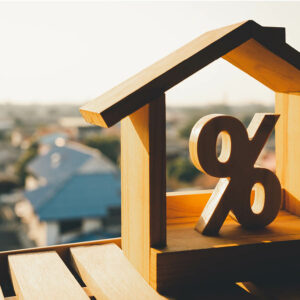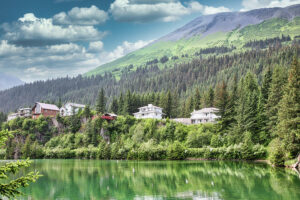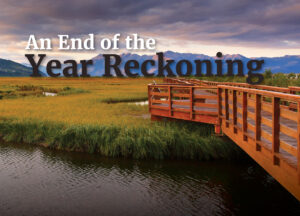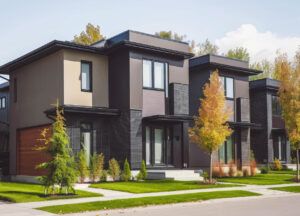† Published in the Anchorage Daily News on October 18, 2023 † Anchorage with its 39% of the stateís 735,556 population faces a pivotal turning point because, without rapid housing changes to its building and zoning codes and residential...

†
Published in the Anchorage Daily News on October 18, 2023
†
Anchorage with its 39% of the stateís 735,556 population faces a pivotal turning point because, without rapid housing changes to its building and zoning codes and residential property tax relief,† Anchorage will lose its dominant place in Alaskaís history to the Mat-Su and the Kenai Boroughs, the two fastest areas of growth, according to the Dept. of Labor.†
A former Anchorage mayor once told me that a city is identified by its downtown commercial development because tourists donít see subdivisions. I also once had a planning director tell me ĎSo what if people move to the Valley?† Let them go.Ē† And, indeed they did Today, 50,000 cars drive under the Muldoon overpass on their way out of Anchorage with most headed to the Valley.
†Anchorage has tried but failed to stop the historic low building permits over the past five years† by adopting changes to ADUs, reducing driveway standards and eliminating most parking requirements but† unfortunately these positive actions are only a band-aid and will not stop the bleeding to the Valley. Anchorage needs not only to change and modify its Title 21 and Title 20 building codes but also modify its tax structure.†
People buy and sell homes for very personal reasons:† marriage, birth, death, divorce, and job change.† What they buy or rent depends on their financial abilities and available inventory.† Todayís mortgage interest rate hovering at 8% now requires at least 1.5 good-paying jobs per household to purchase the average MLS-priced home of $490,000. Last week,there were only 280 homes for sale in the MOA, inclusive of all price points. Half of those homes were built in 1984 or earlier and have reached their functional obsolescence.Many homes built in the 1980ís were built on wooden foundations which have lost their economic life. Yet, buyers have no choice. †
Higher interest rates require painful compromises as to a buyerís lifestyle.† Three bedrooms vs. four.† An attached wall vs. a detached single family. A rental apartment vs. a condo or townhouse with a 20-ft by 10-ft backyard for the family pet. The only inventory that is not in short supply is the one million dollar plus homes for sale. Last week, there was 31 million-dollar plus homes on the market.† Six of those homes were over 2 million, with the top listing price of $3,995,000 located in Girdwood. These million-dollar-plus homes amount to eleven percent of available inventory. †
Everyone is talking about mortgage interest rates but that is only one part of a monthly payment which includes principal, interest, taxes, and homeownersí insurance. Due to worldwide natural disasters and climate change, homeownerís insurance is increasing in Alaska which has 11% of the worldís recorded earthquakes and has experienced three of the eight largest earthquakes in the world. Alaska has an average of 12,000 recordable earthquakes each year. Who doesnít remember where they were on November 30, 2018?†
There is nothing we can do about mortgage interest rates; the cost of sheetrock from China or British Columbia lumber prices. But residential property taxes are something we can address which in Anchorage contributes 54.92% percent of the revenue of the MOA operating budget.† Yes, we all want our streets plowed but it shouldnít all be on the back of residential property owners.†
A homeowner with $490,000 valued house in Anchorage pays $6,915 in property taxes while the same property owner in Palmer will only pay $2,747.† In Wasilla the tax is $5,003. Kenai $4,316 and Fairbanks $8,142. So why is that?† After all, a nail, a 2 x 4, and Trex decking, all cost the same whether in Anchorage, Kenai Peninsula, or the Mat-Su. Yes, they have more land, for example Anchorage has 123 active land listings and the Mat-Su has twice that many but more importantly than the availability of land is that† Palmer, Wasilla, and Kenai all have a sales tax to help offset the burden of government operations for the health and safety of its citizens. Itís time that Anchorage tax all of its citizens with a 2% sales tax, capped at $500 to give relief to residential property taxes to first time home buyers.† Right now there is PFD Alaska Airlines sales going on.† Does anyone thinking about buying a ticket, check to see if their destination has a sales tax?† I doubt it.
Recently my politically conservative husband was in the hospital and whether I was there at 8 am or 7 pm, I saw the same nurses care for him.† I asked the nurses if they worked four ten-hour shifts and they said, no, three twelve-hour shifts.† Then, I asked them where they lived.† And the answer was the Valley.† We are on the verge of a labor shortage with or without Willow, Pikka, or Amazon, and on our way to ranking as #2 in cargo landings at the airport and we have 3.9 billion in infrastructure funds that are going to flood into the state.† If the slope goes to a three-week on and one-week off work schedule, we lose the opportunity for them to become residents of the state.† An unsubstantiated rumor is that a major oil company wants to build a transition man camp because the MOA is buying up all reasonably priced hotel rooms.†
We have no control over mortgage interest rates, no control over insurance companies but we can reduce our property taxes so that more of our first time homebuyers can afford to buy a home.† Anchorage has some of the highest property taxes in the U.S.† According to the U.S. Census Bureau, 2021 American Community Survey, Anchorage ranks 3,047 out of a possible 3,203 for the highest median real estate taxes paid in the U.S.†
Letís take a lesson from our neighbors to the North which, despite COVID,† grew by 23.4% between 2010 and 2021 with a sales tax and reduce property taxes for first-time home buyers. We† already have exemptions for veterans, primary residents up to $150,000, and senior citizens to name a few. A first-time homebuyer tax exemption for five years will repopulate our schools and create more multi-generational families who will want to live and work in Anchorage.
This is not the article I usually write but our lack of housing and loss of population is so bleak, that it is time for all of us to speak out and find some solutions so that the ER nurse or the North Slope oil worker will have a choice to live not only in Kenai, the Mat-Su but also in Anchorage. Letís make sure they donít get on an airplane back to Texas.†
†
The post Itís Time For Anchorage To Have a Sales Tax appeared first on Anchorage ∑ Eagle River ∑ Palmer Alaska Real Estate.











